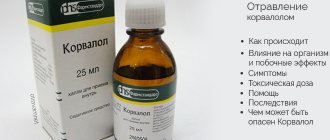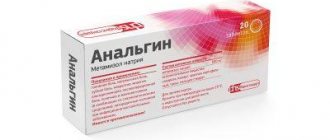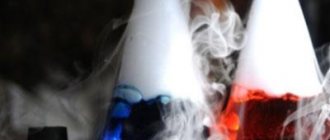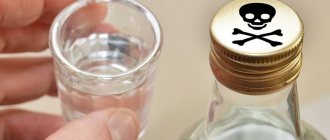Phenazepam is the first Soviet benzodiazepine tranquilizer, a popular drug with a sedative and hypnotic effect. Phenazepam is prescribed for increased anxiety, neuroses, hypochondriacal syndrome, and also to relieve symptoms of alcohol poisoning. The price and prevalence of Phenazepam in pharmacies contributes to the popularity of the drug.
Features of the drug
The active substance of Phenazepam is a substance of the same name from the group of benzodiazepines.
It has an anxiolytic, anticonvulsant, antiphobic, hypnotic and sedative effect on the body by affecting the sensitive receptors of the central nervous system. The substance has a very high absorption rate, so it begins to act very quickly - 15-20 minutes after administration. The maximum level of phenazepam in the blood is formed after 1-2 hours. Phenazepam stays in the body for quite a long time, the half-life lasts from 6 to 18 hours.
Metabolic transformation of the substance occurs in the liver with the formation of metabolites. It is excreted from the body by the kidneys over a long period of time. The duration of the presence of Phenazepam in the urine depends on the individual characteristics of the body. After a single dose, withdrawal of the drug takes from 2 to 2.5 days, with long-term treatment - on average 7-8 days after the last dose.
According to medical data, a significant part of the drug (up to 97%) is eliminated within 72 hours.
Alcohol compatibility
Previously, narcologists tried to treat people for alcoholism with the help of the “folk” tranquilizer “Phenazepam”. Treatment began after a couple of days so that ethanol was completely removed from the body, since alcohol and this medicine are not compatible. It is absolutely impossible to drink them together, as this is simply a lethal dose for the human body.
After an alcoholic binge, a high level of ethanol is observed in the blood system. If you take Phenazepam at this time, it will have a stronger effect on the nervous system.
Taking the drug after alcohol can cause phenazepamine sleep, which will adversely affect your health. Severe intoxication and vomiting may begin. If a drunk person sleeps on his back, then in some cases cardiac arrest may occur or he will choke on leftover food.
Taking alcoholic beverages together with medication can only emphasize the harm of Phenazepam. For example this:
- increasing the aggressive state of an unhealthy person;
- with alcoholic fog, consciousness becomes even more confused;
- manifestations of a suicidal nature;
- a person’s mood deteriorates, he is visited by hallucinations and fear;
- memory deteriorates;
- in space he becomes disoriented,
- after taking the drug and alcohol, you lose control over your actions and words and other bad moments.
The drug “Phenazepam”: overdose. What to do if it happens?
Patients may experience acute poisoning with this drug, accompanied by the following symptoms:
- drowsiness;
- severe dizziness;
- shortness of breath, difficulty breathing;
- muscle tremors;
- decreased blood pressure;
- confusion;
- worsening reaction;
- slow heart rate;
- loss of consciousness, up to coma and death.
Poisoning with Phenazepam manifests itself with varying intensity, depending on the magnitude and duration of excess dosage. All stages of intoxication are characterized by respiratory and heart failure, excessive salivation, and the formation of sputum in the respiratory organs. Conventionally, several stages of overdose can be distinguished as they progress and intensity:
- It is characterized by confusion caused by the narcotic influence of the drug, followed by drowsiness and deep sleep. Subsequently, patients experience hearing impairment, eye movement disorders, voluntary eye twitching, and drooping of the upper eyelid. In some patients, muscle tone and tendon reflexes may be weakened. With this form of overdose, the patient is conscious and reacts adequately to others.
- Poisoning manifests itself as a superficial coma with loss of consciousness. The patient develops muscle hypotonicity, lack of pupillary response to light, and tongue retraction. Vomiting is also possible, which is dangerous, since if it enters the respiratory tract it can cause death.
- Chronic form of poisoning. It is characterized by anxiety, insomnia, nausea (with or without vomiting), and abdominal pain. Also possible: convulsive syndrome, pathological trembling of the torso and limbs, increased agitation, hallucinations. A drug overdose is often fatal.
- A severe form of intoxication is manifested by the absence of reflexes and the development of coma. The patient experiences dilated pupils, severe respiratory distress, cardiac arrhythmia, and a strong decrease in blood pressure and body temperature.
This medication belongs to the group of tranquilizers, that is, drugs that have a pronounced sedative effect. Also, the remedy in question can effectively relieve symptoms such as increased anxiety, fear, and restlessness. The main active component of the drug “Phenazepam” is, in fact, the substance phenazepam; also, each tablet of the named drug contains auxiliary components:
In general, the range of use of this medicine is quite wide; it is used both for the treatment of schizophrenia and reactive psychoses, and as an induction of anesthesia before surgery.
The drug has an extensive list of contraindications for use. So, it is not used if the patient has the following conditions or diseases:
- hypersensitivity to individual components present in the drug;
- it cannot be used to treat pregnant and lactating women;
- persons under 18 years of age;
- it is not used to treat severe depression;
- as well as myasthenia gravis, coma, shock, closed glaucoma.
Side effects from the use of this medication may include drowsiness, absent-mindedness, increased fatigue and general weakness. From the gastrointestinal tract - constipation or, conversely, diarrhea, vomiting, nausea, various appetite disturbances. Skin rashes caused by an allergy to the drug may also appear: itching, hives, various rashes and redness of the skin.
The dosage of this medicine depends on the specific disease or condition diagnosed in the patient. So, the adult dose at the beginning of taking the drug is 0.5-1 mg two or three times a day. The average daily dose for adults is 3-5 mg. The final decision about the exact quantities to take the drug must be made by the doctor.
When taking Phenazepam, the dose per day should not exceed 10 mg. Moreover, for sleep disorders and insomnia, 250 to 500 mg is usually prescribed, that is, half or a quarter of a tablet half an hour before bedtime. For epilepsy - 2-10 mg per day, for alcohol or drug withdrawal syndrome - 2-5 mg per day. Please keep in mind that this drug is not sold freely in pharmacies; it can only be purchased with a doctor’s prescription.
Please note that taking large doses of this drug may cause loss of coordination, hand tremors, blurred vision and speech, and slow breathing and heart rate. The last two symptoms are especially dangerous, so the drug Phenazepam, an overdose of which can also cause coma, should in no case be taken more than 10 mg per day.
If it happens that a large amount of this medicine was taken at one time, the person immediately needs to call an ambulance or immediately go to the nearest hospital, and not go or go there alone, but accompanied by someone. Usually, in medical institutions, to weaken the effect of this medicine, drugs based on the substance strychnine are used.
They are injected intramuscularly 2-3 times a day. The patient is also prescribed medications that stimulate the functioning of the lungs and heart. The patient should be observed by a doctor for some time. Please note that alcohol greatly affects the effect of the drug “Phenazepam”; an overdose in such cases can occur, even if you have taken the recommended dose of the drug.
The risks of negative consequences of taking Phenazepam will be minimal if you do not self-medicate and follow the doctor’s recommendations and the instructions in the annotation. In particular, you need to pay attention to the numerous contraindications to the use of a tranquilizer. The list of relative prohibitions includes kidney and liver damage, organic brain pathologies, chronic alcoholism, and dependence on psychotropics.
You should refrain from using Phenazepam in the following conditions:
- patient age under 18 years;
- pregnancy, breastfeeding;
- myasthenia gravis;
- shock or coma;
- acute respiratory failure;
- glaucoma.
Even if initially the clinical picture does not seem bright, and the victim’s condition is serious, it is better not to take risks. To neutralize the effect of the main component of the drug, the patient must be given an antidote. In case of an overdose of Phenazepam, you should immediately call an ambulance and carry out a few simple manipulations before it arrives.
Gastric lavage
In case of poisoning with Phenazepam, this procedure is effective only if no more than an hour has passed since the drug entered the body (not to be confused with the timing of the development of the clinical picture). Otherwise, the main part of the drug will already be absorbed into the gastrointestinal mucosa and enter the bloodstream. Attempts to rinse a patient’s stomach, made by a non-professional, against such a background can only cause harm and provoke asphyxia.
To carry out the manipulation, it is enough to let the victim drink at least a liter of clean water at room temperature in the shortest possible time. Then he needs to press on the root of the tongue, provoking a gag reflex. Such actions can only be carried out in relation to persons who are conscious and do not experience problems with swallowing.
Sorbents
The effectiveness of this approach depends on the number of tablets taken by the patient and the severity of his condition. If a person with a mild or moderate overdose manages to take an enterosorbent, this will speed up the removal of the aggressive component from the body. The victim will feel relief faster, complications will be less pronounced and serious. Most often, patients are given activated carbon at home - 1 tablet for every 10 kg of weight.
Drink plenty of fluids
The consequences of an overdose of Phenazepam can be minimized by actively introducing fluid into the patient’s body. This activates the work of the kidneys and intestines, speeds up the cleansing of the digestive tract and blood. The patient is given water or sweet tea at a slightly warm temperature. It is important to control the process and ensure that the victim does not choke.
A poisoned person who has lost consciousness is strictly forbidden to try to rinse his stomach or give him something to drink. It is enough to place it on a hard horizontal surface, turning your head to the side to prevent asphyxia. It is recommended to place pillows under your feet to keep your limbs in an elevated position.
Health care
The medical team arriving at the scene examines the patient, collects anamnesis, and evaluates vital signs. If possible, doctors should report the estimated number of tablets consumed, how much time has passed since the poisoning, and what actions were taken.
Usually, on-site doctors only carry out manipulations to keep the patient in a stable condition in order to transport him. If necessary, they perform resuscitation measures.
- anxiety, fear;
- emotional stress;
- irritability;
- sleep disorders.
External signs of drug intoxication
The drug "Phenazepam" in overdose causes a strong sedative effect. You can identify it by the following signs:
- unsteady gait;
- incoherent slow speech;
- unfocused gaze;
- inability to stand straight;
- dilated pupils that do not respond to bright light;
- pale skin;
- stoop and lethargy.
How long does Phenazepam last? Complete elimination of the active substance metabolites occurs within 12-14 hours. In case of a serious overdose, this time increases to a day. Symptoms of overdose completely disappear from the patient on about the second or third day (this period varies depending on the weight and state of health, as well as the ability of the liver to cope with general intoxication of the body).
Question of dosage
How many Phenazepam tablets a particular patient will need for treatment is determined by the doctor in strict accordance with the diagnosis, the condition of the patient’s body, the presence or absence of concomitant diseases and internal pathologies, and age.
On average, to eliminate insomnia, it is recommended to take ½-1 g of Phenazepam half an hour before bedtime; when treating withdrawal symptoms due to alcoholism and drug addiction, 2.5-5 mg of the drug is prescribed. Patients suffering from epilepsy require from 2.5 to 10 mg of drugs, distributed over several doses.
In very complex cases, with some psychiatric pathologies, such as depersonalization and other phenomena, it may be necessary to use large dosages of Phenazepam, which can provoke unwanted reactions, and if taken incorrectly, an overdose. In addition, the medicine itself is difficult for the body to accept and contributes to the formation of a suicidal mood in the patient. The tendency to commit suicide while taking Phenazepam and attempting to commit it is one of the main dangers of the tranquilizer.
Therefore, even a slight excess of the prescribed dosage is extremely dangerous for the life and health of the patient. Just one single dose of 10 mg of the drug can cause severe intoxication with a fatal outcome.
The lethal dosage of Phenazepam is individual for each person, since in this case it is necessary to take into account whether the patient was taking other medications or alcohol. On average, we must assume that the critical amount for an adult is 0.5 mg/kg, for children – 0.25 mg/kg.
To prevent a fatal scenario, it is necessary to carefully control the amount of the drug used. The drug should not be taken together with alcohol or alcohol-containing medications, as ethanol enhances the effect of the drug. In this case, even the use of the required dosage of the drug can cause severe intoxication with subsequent death.
Description of the tranquilizer
"Phenazepam" is a tranquilizer from the group of benzodiazepines. This is a pretty powerful drug. In terms of the strength of its effect on the body, it surpasses many other similar drugs.
The active component of the tranquilizer (phenazepam) binds to special benzodiazepine receptors in the body. This promotes better absorption of chlorine ions by nerve cells and a decrease in neuron excitability.
A person’s anxiety and irritability disappear, and mental calm occurs. Sleep becomes deep and sound. In addition, the drug relaxes muscles and eliminates cramps.
The drug “Phenazepam”: dosage for different categories of patients
Drink plenty of fluids
The use of Phenazepam is strictly prohibited for the following categories of people:
- Minors.
- Pregnant and lactating women.
- People with acute respiratory failure.
- Patients who have suffered a coma are in shock.
- Patients with glaucoma, myasthenia.
- People with high sensitivity to the drug.
- People with kidney and liver failure.
- To old people.
- Patients suffering from depression.
- Patients with organic brain lesions.
- Abuse of psychotropic drugs and alcohol.
The composition can cause drug dependence and withdrawal syndrome. Of all the negative consequences that Phenazepam can cause, an overdose is considered the most dangerous.
Acute drug poisoning can be fatal, while chronic intoxication can cause malfunctions of organs and systems.
Side effects
- Depression
- Increased fatigue, fainting
- Drowsiness
- Suicidal tendencies
- Coma
- Memory problems
- Sudden mood swings
- Impaired coordination and reaction
- Headache
No one is immune from the side effects of Phenazepam and, when taking the drug, depression and suicidal tendencies may occur . Then the person does not see the meaning of life, closes in on himself... Such a person can deliberately increase the dose to a lethal dose, so that death occurs from taking Phenazepam.
What are the dangers of drug overdose?
Phenazepam overdose: lethal dose of tablets for humans, poisoning, consequences
This drug is capable of acting on the central nervous system and other human organs. Treatment with it is carried out under the supervision of a doctor. Due to the fact that the drug belongs to the narcotic group, it can cause hallucinations, tremors and muscle spasms.
- Improper use may cause poisoning.
- The following symptoms may appear: weakness, hallucinations, drowsiness, dizziness, absent-mindedness, lack of coordination, motor and mental passivity, depression.
- While taking the drug, it is prohibited to engage in activities that require increased attention and, if careless, can cause harm to others.
- Digestion is disrupted.
- Causes an allergic reaction.
- Drinking alcohol during treatment is strictly prohibited.
Benefits of the drug
The drug is used to treat the following conditions:
- Increased irritability.
- Psychoses of various complexities.
- Insomnia.
- Emotional stress.
- Epilepsy.
- Muscle stiffness.
- Autonomic dysfunctions.
- Hyperkinesis.
It is widely used in the field of neurology.
The danger of the drug is based on the fact that it has narcotic properties. Taking it without the knowledge of a doctor can cause irreversible harm to the body. Regular use of the drug destroys the psyche, causing mental disorders. And also the work is disrupted:
- gastrointestinal tract,
- circulatory system,
- genitourinary system,
- of cardio-vascular system.
It is important to remember that phenazepam is not compatible with alcohol.
Contraindicated for pregnant women and nursing mothers. This is due to the fact that it has a detrimental effect on the fetus:
- suppresses the nervous system
- destroys the respiratory system
- a child is born with a defect in the sucking reflex.
But there are exceptions in which the drug can be prescribed to pregnant women:
- epilepsy,
- convulsions of various types,
- psychiatric diseases,
- neurological diseases.
In all cases, the appointment is made only if the patient cannot cope with the illness on his own. But the born child will be forced to endure the consequences of drug withdrawal, since even in utero it is addictive.
Due to the fact that older people have reduced activity of organs, the drug is prohibited for them. Phenazepam is one of the medications that can cause organ dysfunction or aggravate existing diseases.
In narcology, this drug is used to treat drug addicts. It is prescribed to alleviate the physical condition of a drug addict. Phenazepam should be taken with caution, as its strong effect on the nervous system can cause anger and attacks of aggression.
There have been cases of severe suppression of the nervous system, which lead to suicide.
Prescription is also possible as replacement therapy. In this case, it is important not to take the medication at the same time as drugs.
It is very easy to get poisoned by phenazepam. It is enough not to follow the doctor’s recommendations or prescribe treatment yourself. Initially, there may be a feeling of side effects, but symptoms of poisoning will soon appear:
- disorientation,
- weak pulse
- rare breathing,
- lack of motor reflex,
- constant drowsiness,
- tremor,
- involuntary vertical or horizontal movement of the pupils,
- low pressure,
- confusion.
This drug is not prescribed for treatment to persons under 18 years of age. Phenazepam poisoning in children is the result of adult carelessness. The drug used by children is very quickly absorbed into the blood due to active metabolism. Therefore, it must be stored out of the reach of children.
If it does happen that the child swallowed the medicine, then the following symptoms begin to appear:
- nausea,
- vomit,
- hallucinations,
- lack of coordination
- difficulty breathing,
- coma.
Having noticed such phenomena, you need to urgently take the child to the hospital, where he will receive qualified assistance.
The main thing in all these actions is to provide assistance on time.
An overdose is possible when taking a large amount of medication. It is dangerous to health. Symptoms depend on the dose taken, including coma and death. Determining the exact dose for treatment is very difficult, since everyone’s body functions and responds to the drug differently.
To avoid overdose, it is prescribed to take the minimum dose. If the desired effect is not achieved, the doctor gradually increases the amount of the drug taken.
The lethal dose of phenazepam is 7 mg per day, and a single dose of a large amount of the drug will also be fatal.
If you drink a large amount of medicine, you should urgently consult a doctor, otherwise death is guaranteed. The effect of phenazepam begins with depression of the nervous system, and gradually spreads to all organs. The liver, heart and kidneys are especially affected.
Only a doctor can neutralize the effect of phenazepam fully and with minimal losses to health. Due to the incompatibility of phenazepam with alcohol, even a small dose taken by a drunk person can lead to severe poisoning. It is very difficult to cleanse the body of phenazepam.
The poisoned person will have to undergo a number of procedures that will drag on for quite some time:
- gastric lavage,
- administration of a drug that blocks the action of a tranquilizer,
- organ maintenance
- restoration of body functions,
- medicinal cleansing of the lymphatic system.
But before the doctor arrives, you should constantly be with the patient and, if he remains conscious, carry out the following procedures:
- artificially induce vomiting,
- take activated carbon or stronger adsorbents.
These manipulations will significantly help in further recovery by neutralizing the current effect of the drug.
The effect of phenazepam on the body is very strong. That is why self-prescription of this medication is prohibited. It should be taken only as prescribed by a doctor and in strictly prescribed doses.
After poisoning, the victim organism has serious impairments. Some of them cause great harm to the body, and some you have to put up with for the rest of your life.
With long-term use of the drug, an addictive effect occurs. You should not take it as a sleeping pill, given the multiple contraindications and danger of consequences.
Addiction to phenazepam is classified in medicine as drug addiction. In this case, treatment is carried out at a drug treatment clinic.
Phenazepam is removed from the body over a long period of time. The timing is affected by:
- age,
- patient status,
- reason for appointment,
- duration of treatment,
- dose used.
After completion of treatment, the drug is eliminated from the body by gradually reducing the dosage. The result of excretion is checked by taking a urine and blood test.
Only by following the doctor’s recommendations and having the desire to be healthy, the patient will be able to achieve the desired result without harm to his health.
Phenazepam: effectiveness, duration of use, side effects, overdose
Loading…
02.10.2017
24.9 thousand
16.7 thousand
5 minutes.
Phenazepam is a psychotropic drug that belongs to the group of tranquilizers. It has a pronounced anticonvulsant, hypnotic and sedative effect. This medicine belongs to the group of benzodiazelines.
The main active ingredient of Phenazepam is dihydrochlorophenylbenzodiazepine. The use of the medicine requires caution and mandatory dosage compliance.
Otherwise, drug poisoning will occur, which will lead to more serious consequences.
In medical practice, there are cases of poisoning with Phenazepam as a result of deliberately exceeding the dosage in order to commit suicide.
The likelihood of poisoning with Phenazepam increases when the drug is combined with alcoholic beverages. If the dosage of a psychotropic drug is exceeded during the course of treatment, serious consequences can also occur.
For adults, the daily dose of the drug is 0.5 mg. For patients suffering from epilepsy, it can vary from 2 to 10 mg per day. During the treatment of alcohol dependence, patients are prescribed Phenazepam with a dosage of 5 mg per day, and for persistent insomnia, daily intake of 2 mg tablets before bed is allowed.
You can be poisoned by Phenazep during pregnancy or while breastfeeding. Death is possible due to disturbances in the respiratory process and asphyxia, and not due to the development of intoxication.
The lethal dose of tablets for an adult is 0.5 mg of the drug per kg of weight. For children it is 0.25 mg per 1 kg.
Phenazepam is prescribed to people of any age for serious disorders of the nervous system. A tranquilizer is prescribed not only for insomnia and mild nervous disorders, but also in cases of manifestations of psychopathy, neurotic conditions, panic attacks, phobias and similar mental disorders. Phenazepam in small doses is successfully used in the treatment of VSD.
This drug is highly addictive, so the usual dose no longer has the desired effect after two weeks of treatment, which leads to abuse of the psychotropic drug.
The development of intoxication in children occurs due to the carelessness of parents who violate the rules for storing the drug, leaving it in an accessible place. Children may accidentally find the tablets and swallow them. Absorption of the substance in a child’s body occurs much faster than in an adult, since their metabolic rate is higher.
If a child is poisoned by Phenazepam, he will experience nausea and vomiting. Coordination disorders and hallucinations may occur. In especially severe cases, the child may lose consciousness. Phenazepam is rarely prescribed to children, since the medicine is a tranquilizer and can affect the child’s psyche.
All stages of Phenazepam poisoning are accompanied by the development of respiratory failure, in which there is a retraction of the tongue, increased salivation and intensive formation of sputum in the lungs.
Clinical picture of intoxication with Phenazepam
Since treatment with this medication is a common practice, some naive patients believe that they can cope with its prescription on their own. This is a misconception, since the drug is usually prescribed in a long course, up to two months. The dosage is gradually increased to maintain the effectiveness of therapy. Moreover, its use is accompanied not only by rapid addiction, but also by the so-called “withdrawal syndrome”.
In this regard, overdose does not seem so uncommon. Its main symptoms affect:
- decreased reflexes,
- drowsiness,
- confusion,
- muscle tremors,
- dyspnea,
- low blood pressure,
- slow heartbeat,
- stupor,
- coma.
All this leads to the fact that the consequences of an overdose can not only significantly undermine health, but also send the patient to the intensive care unit.
If a person has taken the medication for too long, he will exhibit the following symptoms:
- lethargy,
- a state close to depression,
- slowing of reflexes,
- headache,
- mood swings,
- memory impairment,
- disorientation.
In all of the above cases, emergency medical care will be required. If the poisoning is acute, you will need to call an ambulance.
How to eliminate an overdose
The first task in case of suspected overdose is to immediately take measures to detoxify the body from the drug. Determining how to remove phenozepam from the body depends on the intensity of the symptoms and the capabilities of those around you. If the patient is not in the hospital, then the most correct decision would be to take him to the clinic as quickly as possible. If this is not possible, then you should definitely call an ambulance, and before it arrives, try to help on your own.
If the victim is conscious, then it is necessary to cleanse the body of drug residues by inducing vomiting. For this, a slightly pink solution of potassium permanganate is used, but in an unconscious state it is dangerous to use such a method, since the victim may choke on the masses. Therefore, it is necessary to rinse the stomach with a probe. To speed up cleansing, an enema is allowed.
All this time, you must try to keep the victim conscious, preventing him from passing out: patting his face, shaking him, letting him sniff ammonia.
After removing the remaining Phenazepam, the patient is given activated charcoal. During the procedures, it is necessary to monitor the state of breathing and heart function.
In severe cases of overdose, the antidote of the drug is used - Flumazenil solution, but only doctors can administer the medicine in a hospital setting. The medication neutralizes the sensitivity of benzodiazepine nerve endings, thereby eliminating the danger of the pronounced sedative and hypnotic effects of Fenozapem.
At the same time, supportive therapy of the heart and respiratory system is prescribed. Hemodialysis is usually not used due to its ineffectiveness.
Prevention
The consequences of an overdose can be irreversible. Recommendations have been developed for prevention:
- Refusal to try can be treated on its own.
- Follow the regimen for using Phenazepam.
- Do not use for a long time.
- Keep out of the reach of children.
It is recommended that if you experience anxiety or sleep disturbances, seek help from a specialist. People often get poisoned due to irrational use of medicine. Treatment is always carried out according to the scheme.
Practitioner. She graduated with honors from Vitebsk State Medical University in 2012 with a degree in general medicine. She was awarded a certificate of honor for her achievements in her work.
Overdose symptoms
The severity of Phenazepam poisoning depends on the number of tablets taken. Develops within 30 minutes. It is always accompanied by a loss of consciousness or the formation of deep sleep.
In adults
Poisoning occurs in several stages. Mild symptoms include:
- constant desire to go to bed;
- weakness;
- decreased attention and performance.
Signs of average:
- formation of deep sleep;
- depression of consciousness to the point of complete stupor;
- breathing problems;
- severe inhibition.
If left untreated, a serious condition may develop. Symptoms of an overdose of Phenazepam:
- development of coma;
- respiratory depression;
- muscle stiffness;
- clonic twitching in the limbs;
- pulmonary edema.
An overdose is determined by the absence of consciousness. A person who has been poisoned does not respond to external stimuli. It's hard to bring him to his senses.
In children
"Phenazepam" often causes the development of household poisoning with Phenazepam. A child, especially at a young age, may take pills without understanding their dangers. Their use is strictly prohibited. For this reason, 10 pieces are needed to develop an overdose. Symptoms:
- Change of consciousness. Most often, coma quickly appears.
- Hallucinations.
- Headache.
- Movement disturbances.
It should be noted that Phenazepam is used by adolescents for the purpose of suicide. They can only take it at home, since the product is sold strictly according to prescription. Parents need to take this point into account.
Acute drug poisoning occurs clearly and is difficult to miss. Chronic intoxication is not always obvious, which complicates the diagnosis and sometimes does not allow a timely response to the problem.
In adults
Chronic drug poisoning most often manifests itself in the form of daytime drowsiness after a long rest, weakness, and trembling of the limbs. Sometimes the picture, on the contrary, is based on insomnia, restlessness, irritability, and anxiety. If you ignore the symptoms and continue therapy, additional signs appear: nausea and vomiting, hallucinations, decreased temperature, abdominal pain. This is followed by collapse, which threatens the patient's life.
In adults, the symptoms of an acute emergency condition depend on the degree of overdose:
- mild - decreased muscle tone, confusion, drowsiness or even stupor, drooping eyelids, suppressed tendon reflexes. The victim reacts to external influences, makes contact, his pupils react to light;
- medium - the pupils are constricted, there is no reaction to light. Tendon reflexes and reactions to corneal irritation are severely inhibited or absent. The patient may not respond to pain and may have trouble swallowing. Sometimes a borderline state occurs - a superficial coma;
- severe - a sharp drop in body temperature (rarely fever), a drop in blood pressure to critical levels. The pupils are greatly dilated and do not respond to light stimuli. Tachycardia may be recorded against the background of decreased tone of skeletal muscles and internal organs. Breathing is shallow, irregular, ragged. There are no reflexes, there may be spasms and convulsions. There is a high probability of deep coma.
A person can die from an overdose of Phenazepam at any severity of the condition if he is not provided with timely and adequate medical care. The cause of death may be asphyxia by vomit, respiratory arrest as a result of depression of the respiratory center in the brain, or failure of internal organs.
In children
Persons under the age of 18 are prohibited from giving a tranquilizer in any quantity. Most often, Phenazepam poisoning in young children occurs due to parental inattention, which causes the children to swallow pills. Teenagers may use the drug to attempt suicide, so the drug should also be inaccessible to them.
Drug poisoning usually manifests itself in the form of nausea and vomiting, confusion, and loss of coordination. Some victims lose their hearing, experience hallucinations, and fall into a stupor. In severe cases, coma and death occur. In children under 12 years of age, death is less likely to result from an overdose than in adolescents. The phenomenon is caused by the instability of the heart muscle, characteristic of the period of pubertal maturation.
Phenazepam and alcohol
The simultaneous use of medicine with alcohol is dangerous for human health and life, regardless of the volume of the components. Their combination increases each other's toxicity, increases the risk of adverse reactions, and leads to inhibition of the activity of vital centers of the central nervous system. Even in minimal doses, such a complex of substances causes dizziness, increased fear, sweating, and confusion. In some cases, people experience hallucinations and become suicidal.
It is strictly forbidden to use the drug to fall asleep against the background of alcohol intoxication. Drug-induced sleep can lead to complications such as choking on vomit, retrograde amnesia, and involuntary emptying of the bladder and bowels. Against this background, there is a high risk of respiratory arrest or an attack of suffocation. Even if the victim receives timely medical care, there is a possibility of irreversible changes in his brain.
Use of the drug by children
Some are interested in whether this medicine can be given to children and in what dosages. Doctors warn that it can only be taken by adults. Phenazepam poisoning in children can lead to various negative consequences.
And yet, there are cases of drug use by young children and adolescents, and not infrequently. The main reason for this is the inattention of parents. Kids can drink medicine if they accidentally see it on one of the shelves where they can get it. Therefore, medications must be hidden as far as possible.
Another reason, but for older children, is deliberate use, suicide attempt, desire to poison themselves and die.
The most common symptoms that occur in children who have taken Phenazepam:
- vomit;
- hearing loss;
- stupor;
- hallucinations;
- loss of coordination;
- coma and even death.
Despite their very young age, preschoolers and slightly older children - up to 10-12 years old - undergo treatment much better and more successfully than adolescents, for whom the consequences of poisoning can be more serious and disastrous due to the instability of the heart muscle.
Restoration of the body
What consequences from an overdose of Phenazepam may occur in the distant future? The body recovers from poisoning quite slowly. Patients often experience the following residual effects for a long time:
- movement coordination disorders;
- dizziness;
- asthenia;
- emotional lability;
- depression;
- asthenia;
- dysfunction of the liver and kidneys.
All this indicates that Phenazepam is a difficult drug. For this reason, it is released from pharmacies strictly by prescription. When taking it, you must be very careful and adhere to the recommended treatment regimen.
Phenazepam is the first Soviet benzodiazepine tranquilizer, a popular drug with a sedative and hypnotic effect. Phenazepam is prescribed for increased anxiety, neuroses, hypochondriacal syndrome, and also to relieve symptoms of alcohol poisoning. The price and prevalence of Phenazepam in pharmacies contributes to the popularity of the drug.
First aid
It starts with identifying vital signs. They establish breathing and heart function. If they are absent, resuscitation is performed. Followed by:
- Induce artificial vomiting. Applies only in the first two hours.
- Lay the victim on his side.
- Provide oxygen flow.
- Give glucose. It could be a piece of sugar.
Enterosorbent is used in the form of activated carbon. Calculation: 1 tablet per 10 kg of body weight. In case of poisoning with Phenazepam, treatment is carried out in a hospital setting.
When using Phenazepam, we must not forget that an overdose is very life-threatening. The drug is quickly absorbed into the blood, so at the first signs of drug abuse, you need to call an ambulance and provide first aid to the patient before it arrives. All actions must be performed quickly and accurately.
If the patient is conscious, he needs to be given a large amount of water (3-5 liters) to induce a gag reflex and rinse the stomach. You can also add salt or sodium sulfate to the water, which are no less effective.
After washing, the patient should be given activated carbon or another sorbent: white carbon, Smecta, Sorbex, Enterosgel, Polysorb. Until the ambulance arrives, the poisoned person must be constantly supervised, especially if he loses consciousness.
The lethal dose of Phenazepam is different for each person and it depends on many factors:
- Conditions of the body.
- Mental state.
- Cardiac activity.
- The presence of chronic and ongoing diseases.
- Using the drug together with alcohol.
- Addiction to the medication.
Let's summarize
Unfortunately, you can die from Phenazepam if you do not follow your doctor's recommendations. The use of the drug will not lead to death unless you increase the dose yourself and do not mix the drug with substances that mutually enhance the effect of the drug. Remember that only 10 mg of the active substance of the drug per day is the minimum lethal dosage. If you listen to your doctor, it will be impossible to die from Phenazepam. Don't self-medicate!
Found a mistake? Select it and press Ctrl + Enter
The drug belongs to the group of anxiolytics or tranquilizers. It has a sedative, hypnotic, muscle relaxant, and anticonvulsant effect. An overdose of Phenazepam occurs when more than 30 mcg/kg is taken simultaneously. This concentration is equal to the same number of tablets. The medicine belongs to the group of medications that most often poison people. Lack of timely first aid leads to death.
ICD 10 code: T 42.4 Poisoning with anticonvulsants, sedatives, hypnotics and antiparkinsonian drugs.
Treatment
- Application of a therapeutic antidote.
- Adequate ventilation. If necessary, mechanical ventilation.
- Gastric lavage using a tube.
- Introduction of sorbents.
- If consciousness is preserved, emetics are used.
- Forced diuresis, which includes placing an IV and taking Furasemide.
- Hemodialysis.
After stabilization of the condition, symptomatic treatment is carried out. It is aimed at eliminating disorders of the kidneys, heart, and lungs.
Antidote
Entered at 100%. There is an antidote that is used for overdose. Be sure to take Flumazenil. Treat for 2 weeks to 3 months.
Other medications may also be needed for treatment: to maintain the normal functioning of the respiratory tract, cardiovascular system, and to stimulate the activity of the central nervous system. After all, phenazepam can negatively affect any organ and lead to the most severe consequences. It is also possible that there may be a need for additional blood testing to determine the amount of the drug in it.
At first, the patient is prescribed droppers with glucose and saline solutions. Patients who do not suffer from epilepsy can additionally be given droppers with the addition of anexate (flumazenil), an antagonist of phenazepam, to the saline solution.
Indications for use
Instructions for use for Phenazepam indicate that the drug can be used for the following diseases and conditions:
- sleep disorders during hangover or withdrawal syndrome, during psychotic states and borderline state;
- epilepsy of various etiologies;
- increased anxiety;
- bipolar disorder;
- schizophrenia of various etiologies;
- muscle rigidity;
- panic attacks;
- state of drug or alcohol delirium;
- neurosis-like disorders and conditions.











